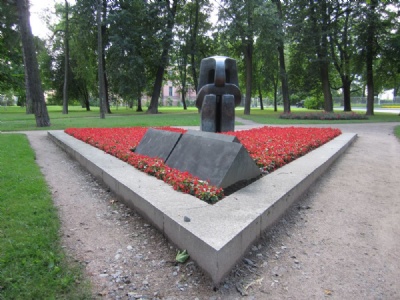Pushkin
On September 17, 1941, the Germans occupied the city of Pushkin just over twenty kilometres south of Leningrad (present Saint Petersburg). Pushkin thus came to be close to the front of Leningrad, which the Germans besieged for about three years. Of the city’s approximately 3,200 Jews, the majority had managed to flee to Leningrad before the Germans occupied Pushkin. In early October 1941, the german authorities forced the Jews to register. Hundreds of Jews were imprisoned in Catherine’s Palace cellars. A few days later, these Jews and others who had been in hiding were murdered by Nazi murder commands. The Executions took place in three different parks in Pushkin and the bodies were buried in mass graves. Somewhere arround 500 Jews were murdered during this action. On January 2, 1942, the Germans declared Pushkin Jewish-free.
Current status: Monument (2011).
Location: 59°43'20.09"N 30°23'49.34"E
Get there: Commuter train to Pushkin.
Follow up in books: Arad, Yitzhak: Holocaust in the Soviet Union (2009).

The Monument is located in a park about 500 meters from the famous Catherine Palace. In fact, I did not know about this monument, but discovered it in connection with a holiday trip to Saint Petersburg. One of the days we did a day trip to the Palace and it was then I discovered the monument in a small park. The design of the monument is very similar to a grieving/suffering person and that was what made it attract my interest. I do not know exactly to what extent it is located at any of the places of execution, but it is to my knowledge a common monument to all the executions that took place in October 1941. The Holocaust as a concept was taboo in the former. It was not until the fall of the Soviet Union in 1991 that the monument was erected.